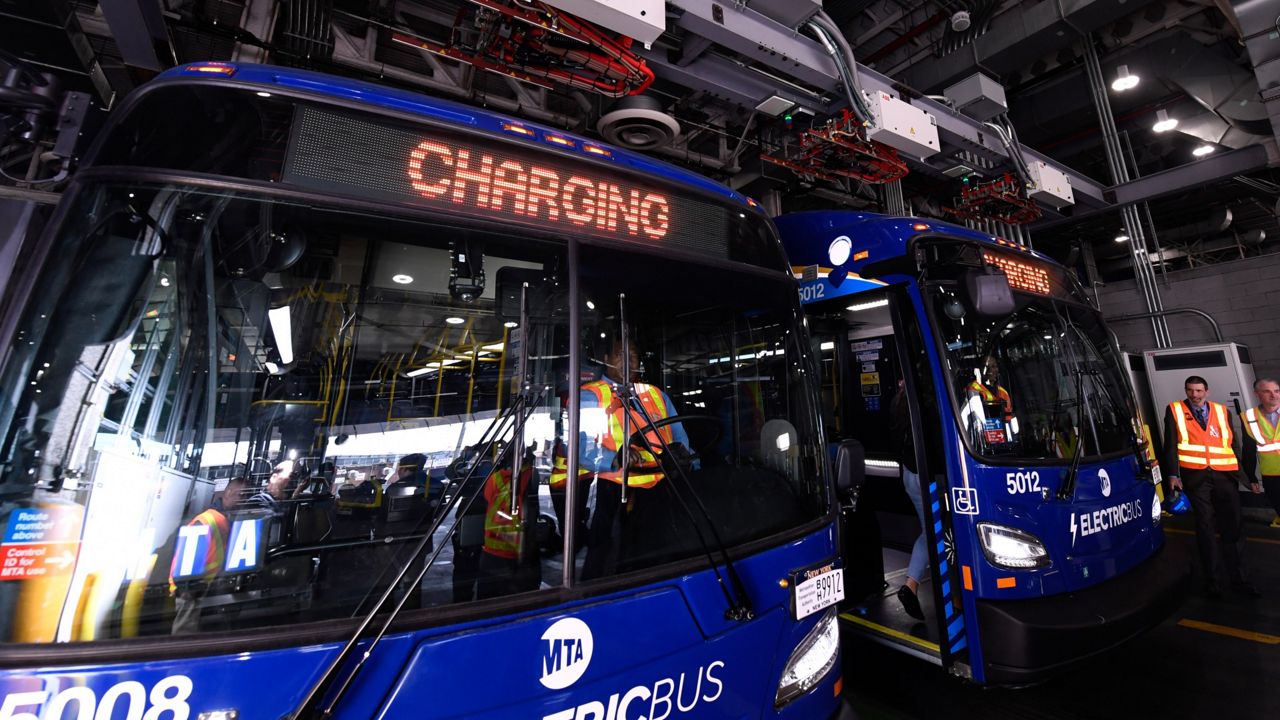Sixty new zero-emission buses will roll out on streets in Queens, Staten Island and Brooklyn this year, traversing routes in “historically disadvantaged communities,” MTA officials said Tuesday.
The new electric vehicles will “help reduce harmful pollutants and create better public health outcomes,” MTA President and CEO Janno Lieber said at a news briefing.
What You Need To Know
- Sixty new zero-emission buses will roll out on streets in Queens, Staten Island and Brooklyn this year, MTA officials said
- The MTA aims to transition to a fully zero-emission bus fleet by 2040, a goal it says will eliminate more than 500,000 metric tons of greenhouse gas emissions each year
- The vehicles will operate “specifically in environmental justice and historically disadvantaged communities," MTA President and CEO Janno Lieber said
“I always say mass transit is the antidote to climate change,” Lieber said. “And zero-emissions buses are key to our ability to improve air quality.”
The MTA aims to transition to a fully zero-emission bus fleet by 2040, a goal it says will eliminate more than 500,000 metric tons of greenhouse gas emissions each year.
“These 60 new buses, on top of those that we’ve already got on the road, are a major, major step in that direction,” Lieber said.
In mid-April, the MTA announced that it had placed an order for 15 electric paratransit buses, with the first of those vehicles set to hit the streets that week.
All 60 new buses will be in service by the end of the year, Frank Annicaro, the senior vice president of New York City Transit’s Department of Buses and MTA Bus Company, said at Tuesday’s briefing.
The MTA has partnered with the New York Power Authority and Con Edison to power the buses and build charging infrastructure, Lieber said.
The vehicles will operate “specifically in environmental justice and historically disadvantaged communities,” he added.
“Folks in these historically disadvantaged communities have struggled disproportionately with the impact of bad air quality — we talk about it all the time, high rates of asthma, other bad health outcomes,” he said. “And it’s one of the reasons that we want to put these zero-emissions buses first into those historically disadvantaged communities.”




